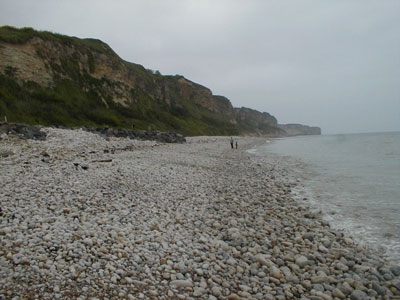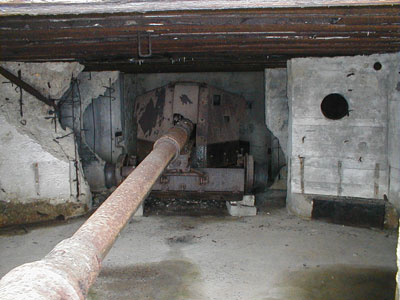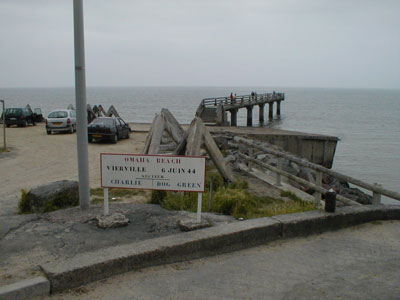|
Omaha Beach - Charlie and Dog Green
Wednesday, June 06, 2001; posted by Paris These are images from Omaha - Charlie and Dog - beaches which were taken by the 29th Division's 116th Regimental Combat Team This introduction is by Kevin R. Austra. As soldiers of the U.S. Army's 1st Infantry Division leaped from their landing craft into the choppy waters off Omaha Beach, many cursed the landing-craft pilots who had deposited them too far away from the invasion beach. German small-arms fire from the bluffs overlooking the approaches raked the surface of the water, while indirect artillery fire splashed amid the landing craft in the English Channel. On the morning of D-Day, June 6, 1944, the soldiers who headed for Omaha's 4-mile-wide, crescent-shaped beach faced a 300-yard dash to the base of the bluffs. First the landing craft and soldiers had to make their way through a mixture of German obstacles, some of which protruded above the low tide. Halfway to the bluffs at the end of the tidal flat was a raised shingle ledge of sand and smooth stones. There the Germans had placed thick belts of barbed wire. That shingle was the first spot on the otherwise open beach to offer the troops any cover from the machine-gun fire. There was still another 100 yards to go before they reached the base of the bluffs, however, where more wire and mines awaited. As the GIs struggled across the sand, the Germans poured down a steady stream of fire from their elevated positions. The bulk of the American infantry was held up at the shingle. Some soldiers dashed back to the water to seek shelter behind the German beach obstacles. Company A of the 29th Division's 1st Battalion, 116th Infantry Regiment, hit the beach and drew such heavy fire that within 10 minutes it ceased to be an effective fighting force. Much of the unit's equipment was lost in the Channel. The ferocity of the enemy response was due primarily to the 352nd Infantry Division, one of the few full-strength German divisions in France. Whether the Allied leadership knew of its location along the coast is the subject of debate. Some sources say that its presence was a complete surprise. Others state that Lt. Gen. Omar Bradley, commander of the U.S. First Army and all U.S. ground troops during the landings, was informed of the 352nd's relocation to Normandy, but the information came too late to alter Allied planning. |
 |
| Looking down the pebble-covered beach. |
 |
| Looking from the pier toward the beach and hills. |
 |
| Looking right from the pier down the beach. |
 |
| The gun that is housed under the American Memorial. |
 |
| The American Memorial sits on top of a gun casemate and has a series of flagpoles above. |
 |
| A sign that tells what the beaches are, and the pier can be seen in the background. |